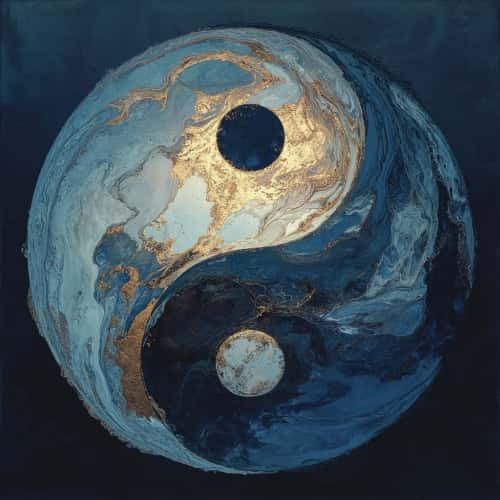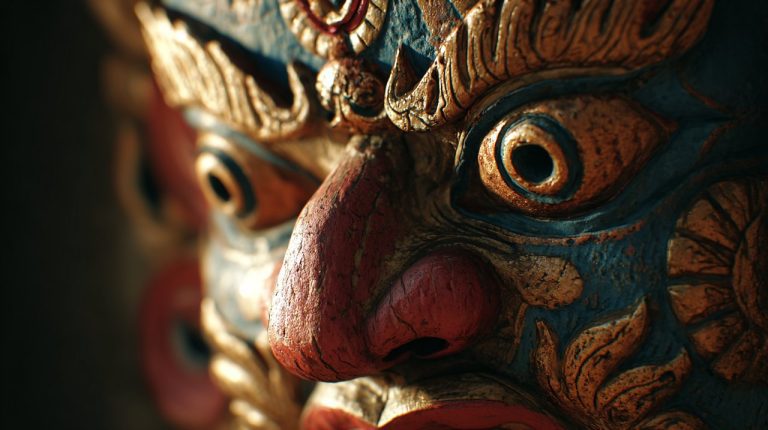White Tara Statue: An Environmental Psychology Guide to Healing & Longevity
Have you ever paused to wonder if an object, something inanimate, could truly shape your well-being, your ability to heal, or even your sense of calm and longevity? Or is its perceived power simply a reflection of what we project onto it?
As someone deeply fascinated by ancient wisdom, I see the White Tara statue as a brilliant example of a sophisticated “environmental self-care” tool. It acts as a visual anchor, subtly designed to reshape our inner world.
Its effectiveness isn’t rooted in any mystical magic. Instead, it comes from a deep, ancient understanding of how our physical surroundings can become incredibly powerful psychological triggers for our minds.
The White Tara Statue: Your Intentional Anchor for Well-being
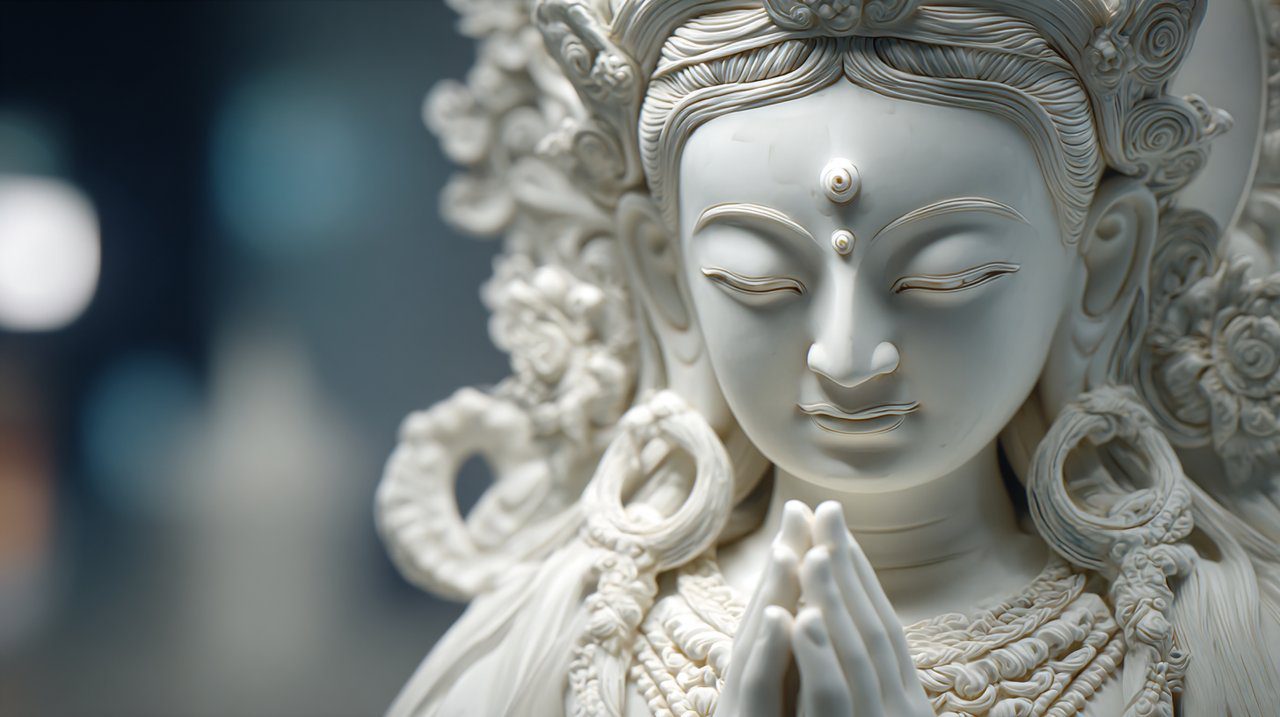
Placing a White Tara statue in your space is about much more than just decorating. Think of it as introducing a deliberate, intentional element into your personal environment.
It’s an anchor, specifically designed to help cultivate certain mental and emotional states within you. This ancient approach actually aligns perfectly with modern ideas about creating truly intentional spaces, where every single item serves a purpose beyond just looking good.
Visual Language of Healing: Decoding White Tara’s Symbols
White Tara, with her serene posture and distinctive features, speaks a powerful visual language. Each symbol acts as a deliberate psychological cue, designed to gently remind us of specific qualities we want to cultivate.
Let’s break down some of these powerful visual triggers:
- Her pure white color isn’t just aesthetic; it symbolizes purity and the absence of suffering. Psychologically, it acts like a visual cleanser, helping to quiet the mind.
- The seven eyes, including those on her palms and feet, represent her boundless, compassionate awareness of all suffering. For us, they become a profound reminder to cultivate greater empathy – both for others and, crucially, for our own needs and self-care.
- Her full, youthful form isn’t merely about beauty. It suggests longevity and robust health, serving as a constant, positive affirmation for our own vitality and resilience.
When we consciously engage with these symbols, they transcend simple iconography. They transform into active, daily reminders, prompting us to embody these very qualities within our own lives.
Material Choice: Resonating with Your Personal Intentions
The material of your White Tara statue – whether it’s bronze, wood, or stone – isn’t just a stylistic choice. Each material subtly communicates a different visual and psychological weight.
Choosing the right material becomes an act of personal attunement. A heavier bronze piece, for instance, might psychologically evoke a sense of grounded stability. In contrast, a lighter wood carving could suggest flexibility and a more natural, organic growth.
The material truly becomes part of the visual reminder’s texture, directly influencing your subconscious perception. Think about it: a smooth, polished surface could encourage a calm, fluid mental state, while a textured one might prompt a deeper, more tactile engagement with the statue’s presence.
Ultimately, this choice is about finding the physical form that best aligns with the specific healing or longevity intentions you genuinely wish to cultivate in your space.
Strategic Placement: Designing Your Mental Sanctuary
The thoughtful placement of your White Tara statue is a powerful act of environmental psychology. It transforms an ordinary space into your own personal sanctuary, specifically designed to foster healing and growth.
It’s truly about orchestrating your surroundings to actively support your inner world. Imagine how a perfectly composed piece of music can shift your mood; intentional placement works in a very similar, subtle way.
Feng Shui as Environmental Psychology: Optimizing Your Energy Flow
From a feng shui perspective, placing a White Tara statue isn’t about superstition or mystical ‘energy flow’ in the traditional sense. Instead, it’s about optimizing your surroundings to support your well-being through environmental psychology.
When we talk about ‘qi’ in this context, think of it as the subtle psychological impact of spatial arrangements. Placing the statue in areas like the East (traditionally linked to health and family) or Northeast (knowledge and self-cultivation) of a room acts as a potent visual prompt to consciously focus on these life aspects.
The ultimate goal is to create a harmonious visual field. This helps to reduce mental clutter and cultivates a profound sense of peace. Just like certain colors or sounds can instantly soothe or agitate us, the deliberate positioning of meaningful objects profoundly guides our subconscious experience of a space.
Crafting a Sacred Space: The Art of Intentional Setup
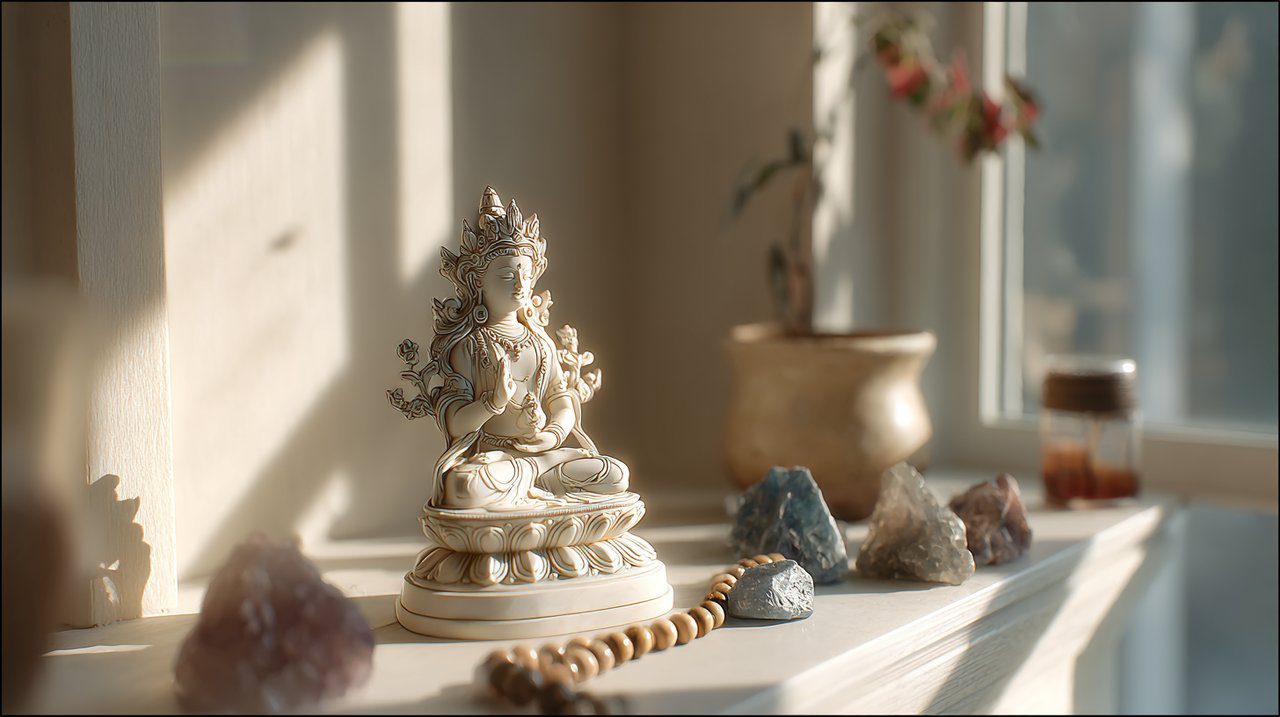
Creating a dedicated space for your White Tara statue – whether it’s a small altar or a serene corner – significantly amplifies its power as a psychological anchor.
This isn’t merely about aesthetics. It’s about establishing a physical boundary that helps you focus your intentions. Surrounding the statue with other meaningful items, such as healing crystals or a string of mala beads, can further enrich this intentionally designed environment.
Each item then contributes to a cohesive narrative of well-being, creating a holistic experience. Think about how a specific scent or piece of music can instantly shift your mood; a thoughtfully arranged sacred niche works in precisely the same way, providing a consistent visual and psychological cue for introspection and positive reinforcement.
Activating Potential: Engaging with Conscious Focus
Once you’ve chosen and thoughtfully placed your White Tara statue, its true potential unfolds through your active engagement with it.
This “activation” isn’t some mystical ritual. Instead, it’s a consistent practice of conscious interaction, transforming the statue from a static object into a truly dynamic psychological trigger.
Daily Interaction: Building a Ritual of Affirmation
Integrating the White Tara statue into your daily routines transforms it into a powerful positive suggestion system for your mind.
This could be as simple as a quiet moment of contemplation each morning, focusing on her serene expression and the qualities she represents. You might light a candle or offer a fresh flower, creating a small, personal ritual.
These consistent actions build a deeper connection, reinforcing the statue’s profound symbolic meaning in your mind. This repeated, conscious engagement actually helps to strengthen the neural pathways associated with healing, compassion, and longevity, making these vital qualities far more accessible in your everyday life.
The Statue as a Prompt: Cultivating Inner Resilience
The White Tara statue stands as a constant visual prompt, a gentle, ever-present reminder to return to your core intentions of healing and inner peace.
When you’re facing stress or illness, simply gazing at her image can function as a powerful psychological reset button. It helps to guide your focus back to resilience and recovery, shifting your mindset.
Her presence actively encourages a mindful approach to your own health journey, fostering a proactive rather than a reactive stance. Much like Dzi beads are worn as protective talismans, the White Tara statue, through your conscious interaction, becomes a powerful mental shield, continually nudging you towards self-care and profound inner strength.
Integrating Wisdom: White Tara’s Philosophy in Daily Life
Ultimately, the White Tara statue isn’t just an object; it’s a conduit for a profound philosophy, a way of being that extends far beyond its physical form.
Its true value emerges in how it inspires us to embody its core principles – compassion, healing, and longevity – within the fabric of our everyday lives.
Longevity’s Echoes: Ancient Wisdom for Modern Self-Care
The longevity symbolized by White Tara isn’t merely about a longer physical lifespan. It speaks to the enduring quality of life, vibrant vitality, and profound wisdom.
This ancient wisdom resonates powerfully with our modern understanding of self-care. Just as elephant symbolism often signifies wisdom and strength across many cultures, the White Tara statue reminds us that true, holistic longevity is cultivated through inner peace, self-compassion, and a deeply balanced approach to life.
Her presence gently prompts us to reflect on our habits, our relationships, and our mental landscape, encouraging us to make choices that genuinely contribute to sustained well-being.
Compassion in Action: A Visual Guide to Empathy
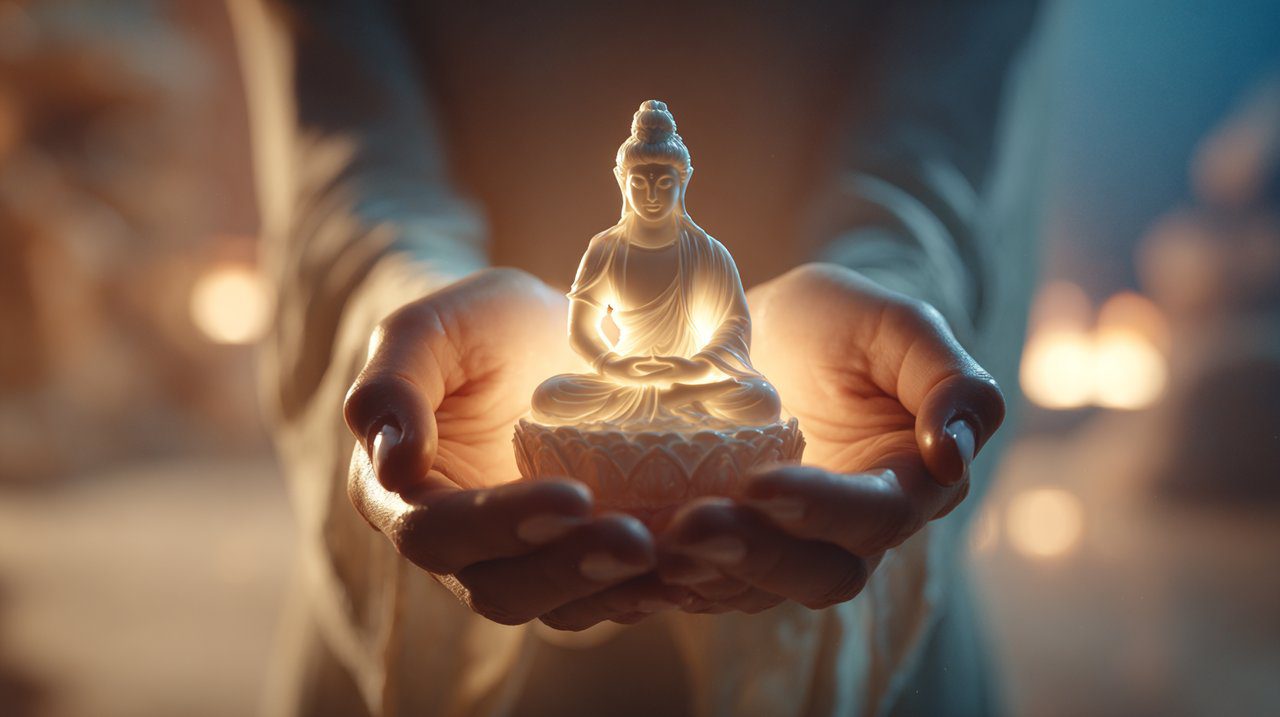
White Tara’s most defining characteristic is her boundless compassion. Her image serves as a constant visual guide, gently encouraging us to cultivate empathy – not only for others, but crucially, for ourselves.
In a world that often demands relentless striving, she offers a powerful reminder of the profound healing power found in kindness and self-acceptance. By consciously interacting with her image, we are, in essence, practicing a potent form of active mindfulness.
This practice helps to train our minds to respond to life’s inevitable challenges with greater patience, understanding, and grace.
So, when we approach the White Tara statue with a rational understanding of its deep psychological function, it transforms completely. It moves beyond being just an object and becomes a truly sophisticated tool for environmental self-care.
It’s an active invitation to intentionally construct an environment around you. An environment that serves as a powerful visual reminder and a consistent, positive suggestion system for healing, longevity, and compassion.
For those of you looking to further cultivate this kind of intentionality in your life, exploring other resonant items like healing crystals or engaging in practices that foster mindful presence can be a truly natural and insightful next step in building an environment conducive to holistic well-being.
💡 Häufig gestellte Fragen
A White Tara statue acts as a sophisticated environmental self-care tool by serving as a visual anchor. It is intentionally placed to reshape our inner world and cultivate specific mental and emotional states, aligning with modern concepts of creating purposeful spaces that psychologically trigger positive well-being.
The pure white color of the White Tara statue symbolizes purity and absence of suffering, acting as a visual cleanser for the mind. Her seven eyes, including those on her palms and feet, represent boundless compassion and awareness, reminding us to cultivate empathy for ourselves and others.
The material of a White Tara statue, such as bronze, wood, or stone, contributes different psychological weights. A heavier bronze might evoke grounded stability, while lighter wood suggests flexibility. The texture of the material, whether smooth or rough, also influences subconscious perception and engagement with the statue's presence.
Strategic placement, informed by principles like Feng Shui, transforms a space into a sanctuary by optimizing surroundings for well-being. From a psychological perspective, placing the statue in areas like the East (health) or Northeast (self-cultivation) serves as a potent visual prompt to focus on these life aspects, reducing mental clutter and fostering peace.
Daily interaction with a White Tara statue transforms it into a dynamic psychological trigger through conscious engagement. Simple rituals like contemplation, lighting a candle, or offering a flower build a deeper connection, reinforcing its symbolic meaning and strengthening neural pathways associated with healing, compassion, and longevity.

